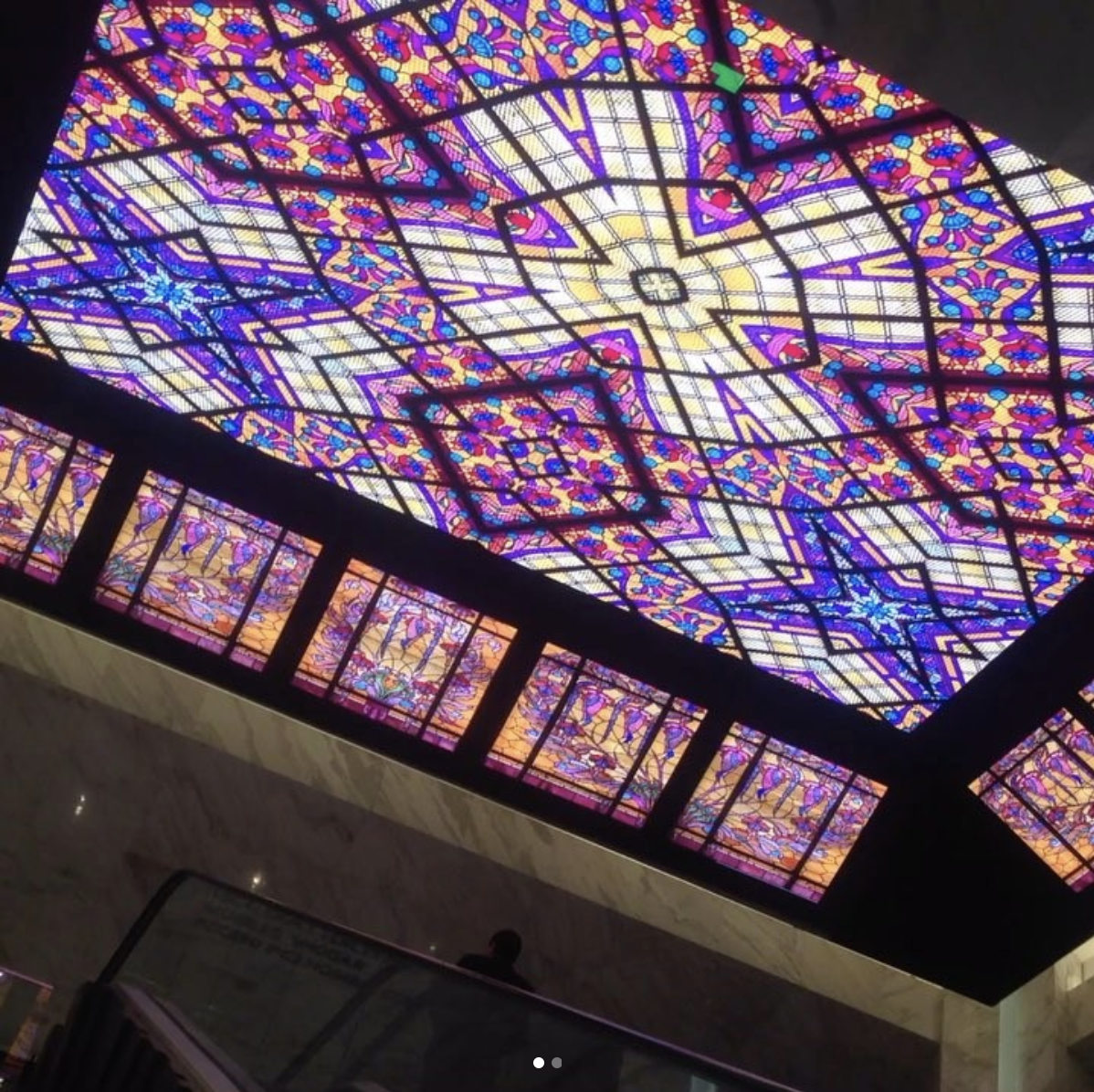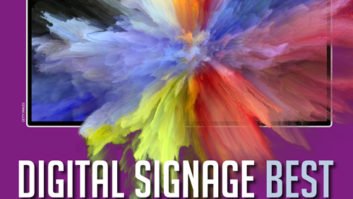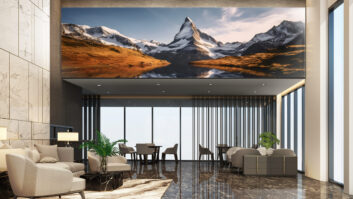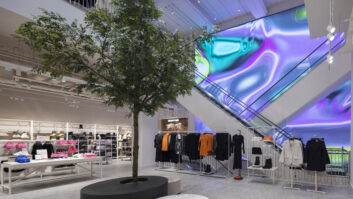
Previously we looked at the emergence of dynamic content for digital signage within the wider IoT framework, before revealing the factors that affect engagement. In the final part of this feature we consider what developments we can expect to see in the future.
Inevitably, screen technology will continue its upward curve. For example, Patrick Halliwell, managing director of Daktronics UK, foresees the imminent arrival of 1.5mm and 1.2mm pixel pitch LED displays, and sees chip-on-board technology bringing new levels of durability to high traffic areas. Thomas Walter, section manager, strategic product marketing at NEC Display Solutions Europe, foresees large screen surfaces increasingly being integrated into a building’s architecture: ‘mediatecture’, he believes, will become integral to many retail environments.
For Jeff Hastings, CEO of BrightSign, voice may have a future. “There’s a lot of buzz in the industry about how voice integration in digital signage may be the next big step forward in how signage is used to interface with customers,” he says. “And while I don’t doubt that voice integration will become much more prominent in the years ahead, as an industry we have some interesting challenges to address.” These, he believes, are in simplifying voice interaction in order to minimise the amount of computing horsepower required; not yet 100% pervasive internet connectivity; and whether we could ever relate to public signage in the same way we relate to Alexa in the privacy of our homes.
Vertical apps
Mark Childerhouse, sales director at Pioneer Group, believes ‘vertical’ apps can be what drives the industry forward – notably in beauty, where it will be possible for users to virtually try on, for example, over 200 shades of nail varnish with no tester pots in sight. Pioneer is, he says, currently rolling out such a project.
“Think of the huge knock-on effect this would have on stock levels and profit margins for retailers,” he nods. “It will totally transform their business model.”
“We will see XR deployed in many facets of retail, from enhancing the ambiance of a store to allowing shoppers to ‘try on’ clothing without actually doing so”
As well as seeing how LED screens will continue their upward trajectory, Halliwell believes that XR (the catch-all term for VR, AR and mixed reality) may become significant – but not where you might think.
“Retailers can see their audiovisual systems on their architecture prior to making a purchase in a 3D environment, an improvement upon 2D conceptuals and renderings,” he says. “Retailers could choose multiple vantage points to see how their new technology would be viewed prior to installation. This can help decide what technology to buy, what size, how to use it and so on.”
“We will see XR deployed in many facets of retail, from enhancing the ambiance of a store to allowing shoppers to ‘try on’ clothing without actually doing so,” adds Stephanie Gutnik, vice president, business development at Broadsign.
There seems little question that the digital signage industry is not yet quite where it wants to be. It has managed to present consumers with captivating images that draw attention, thanks to latest-generation screen technology. It is deploying state-of-the-art sensor technologies to create unique, individual experiences that, in theory at least, cannot help but engage consumers. It is, more than it ever has been, able to deliver the right message in the right place at the right time to the right audience. Technology allows retailers and advertisers to react in real time, to tweak content and messaging instantaneously in response to sensor-acquired data.
There is equally little question that the effectiveness of digital signage is widely acknowledged, and its value now far better understood than it was in the early days, when traditional advertisers were sceptical to the point of hostility towards it. And yet…
A better place
The industry is undoubtedly in a far better place, with its emphasis on measurability, than it has ever been in terms of being able to demonstrate the ROI that those who invest in digital signage are looking for. As Childerhouse and Halliwell noted: A/B testing has apparently revealed an uplift in sales where digital signage has been deployed – but no-one seems to be willing to disclose their results.
It is an industry mantra that engagement is a good thing and must, inevitably, lead to increased sales. It’s hard not to conclude, based on the evidence, that the jury is still out on that. That’s not to say that it isn’t true – only that the assertion seems, largely, to lack supporting proof.
The $64 million question seems to be: will we ever be able to establish an absolute causal link between a consumer seeing messaging on a digital sign – and the product he or she went on to buy? Perhaps we’re asking too much. Perhaps, as Gabriel implied: if we can show that we’re doing the right things, and that we’re doing them right – we have to believe that the financial results will follow. It may be an act of faith – but, for the time being, it may be the best we can do.
Given the size and growth of the digital signage industry, however, it would be foolish to believe that it won’t be long until we can do better.







